
At the end of the 12th century, at least, a hundred towers, crossed the skyline of the city, only twenty of which have survived the ravages of fire, warfare and lightning strikes, and can still be seen.
Currently, the "Towers of Bologna" is a group of medieval structures in the city.
The most significant of the towers of the historic city are the Two towers of Bologna, also known as the towers of Bologna - tower of Asinelli and the tower Garisenda (Le due Torri Asinelli La torre, La torre Garisenda).
The towers of Asinelli and Garisenda are located near each other on the square Port Ravagnan (Piazza di Porta Ravegnana), represent a unified ensemble, are among the most famous and recognizable landmarks and unchanged recognized symbol of Bologna.
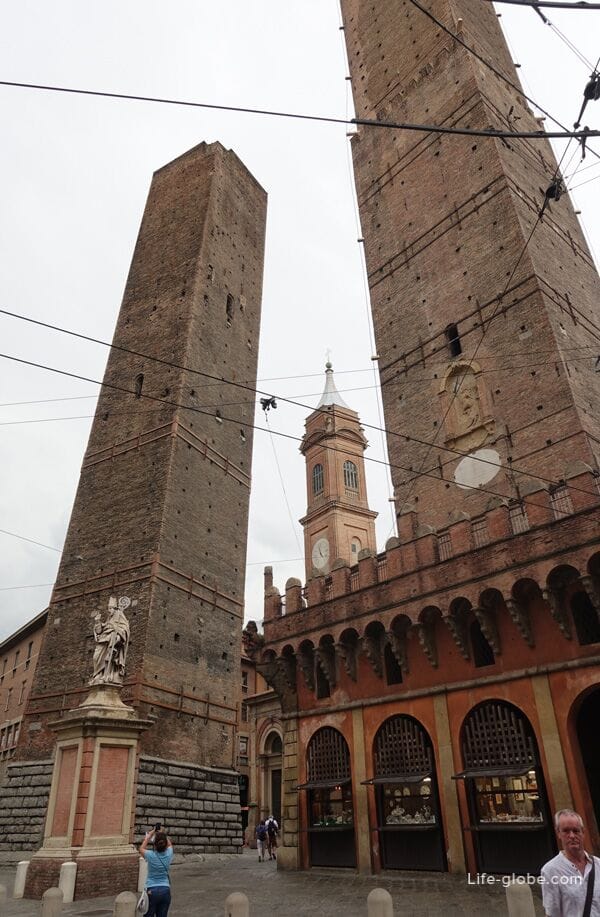
Built of masonry, towers fulfilled an important military function and was represented by its grandeur the social prestige of noble families.
Recently the statue of San Petronio, created by Gabriele Brunelli in 1670 was installed in front of the towers.
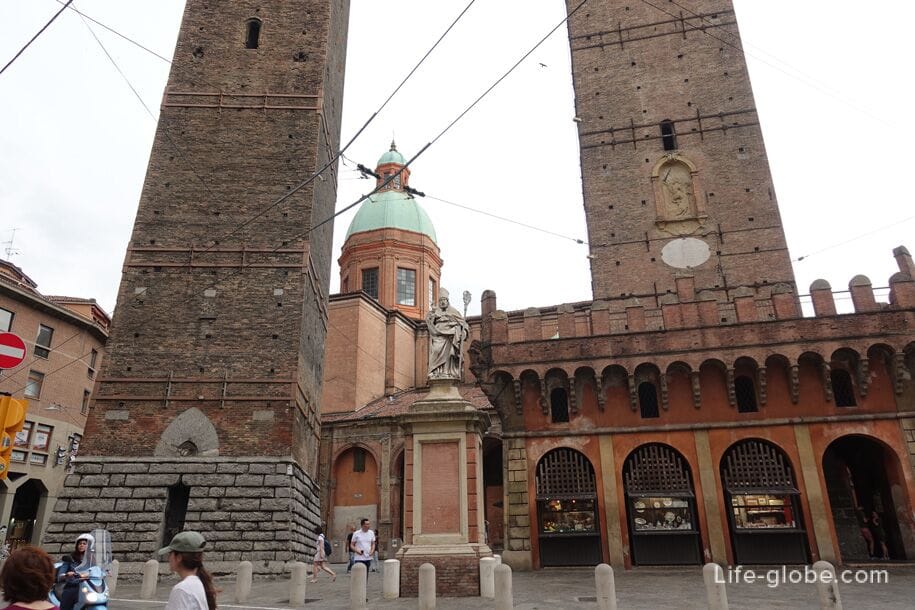
Names: Asinelli (high, main tower) and Garisenda (low, Junior tower) come from families which are traditionally credited with the construction of the towers, between 1109 and 1119 years. In fact, the lack of documents pertaining to such remote epochs, makes the origin of the towers less certain: for example, with regard to the family of Asinelli, they are mentioned in connection with the famous tower for the first time only in 1185, after almost seventy years of the proposed date of construction.
Now the towers are falling look.
Tower of the Asinelli is the highest tower has a height of 97.2 meters, a canopy of 2.23 meters and an internal staircase with 498 steps, which was finished in 1684.
The municipality became the owner of the tower in the fourteenth century and used it as a prison. Scientists Giovanni Battista Riccioli (in 1640) and Giovanni Battista Guglielmini (in the next century) used the tower for experiments and for surveillance of the Earth's rotation. In more recent times, on the Asinelli was installed television relay RAI. During the second world war, between 1943 and 1945, the tower was used for sighting features: four volunteers were hiding on the top floor of the tower during the bombing in order to send aid to places affected by the bombing.
On the military purpose of the tower also shows the lower extension, which is also called roccetti or mini-fortress, built around the square base of the tower in 1488 as the headquarters of the guard towers. Now under the arcade there is a shopping point, reminiscent of the medieval trade function "Mercato di Mezzo".
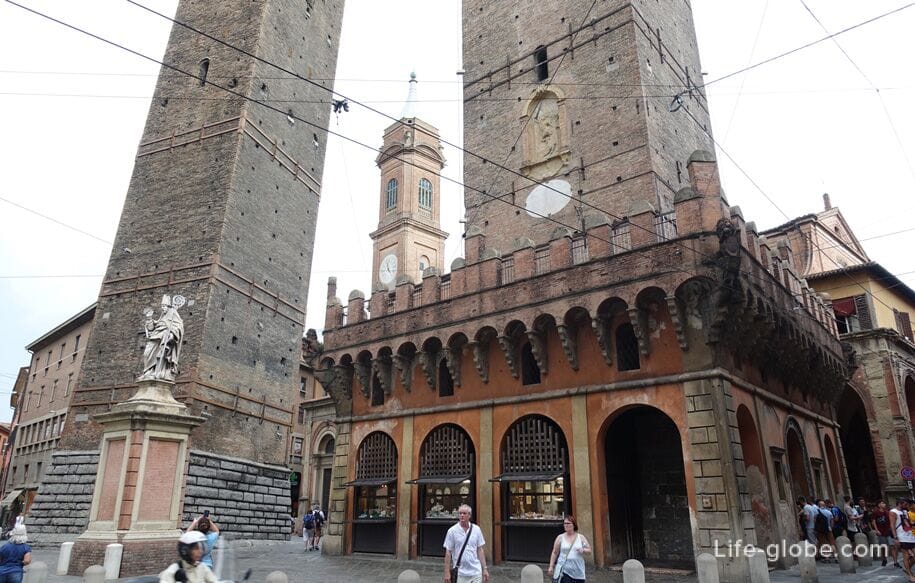

Today, the tower of Asinelli is known as the highest of all the "Falling towers" of Italy. The tower is accessed via internal wooden staircase. The tower offers panoramic views of the historical centre of Bologna.
The cost of a full ticket 5 Euros; children under 12, people over 65 years of age, pupils and students, groups of at least 20 persons and owners Card Musei Metropolitani - 3 Euro; for owners of Bologna Welcome Card PLUS and guides, with a group of minimum 20 people - for free.
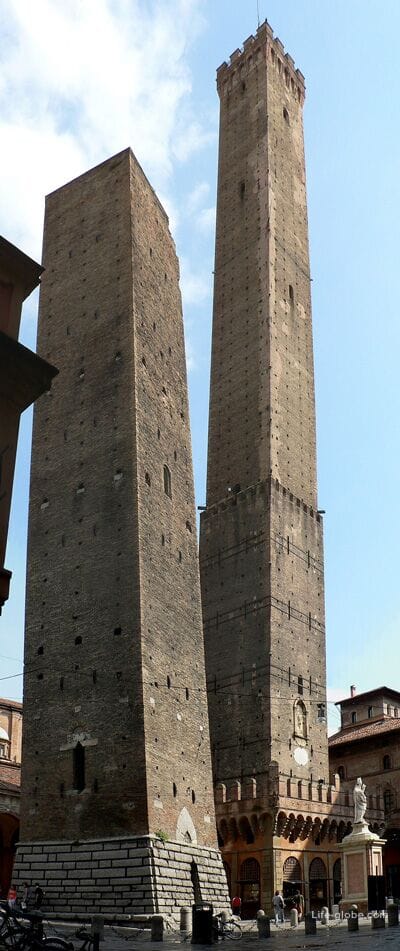
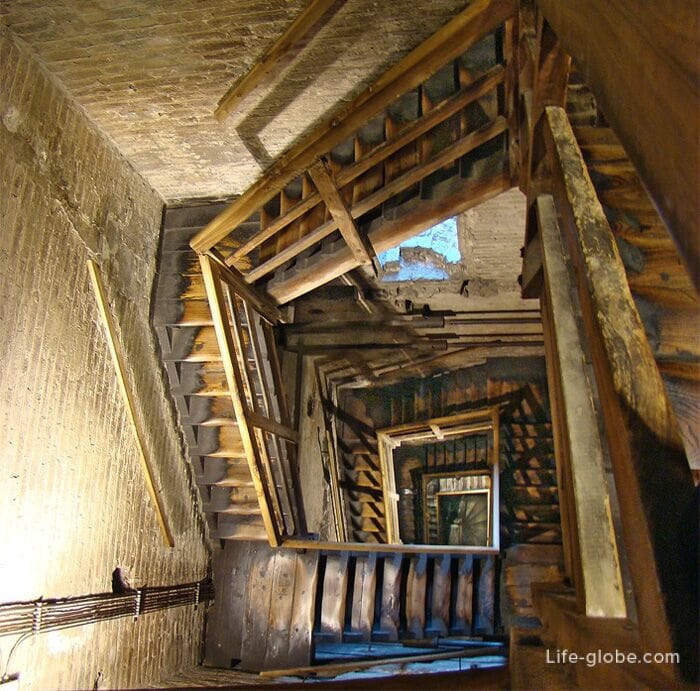
The Garisenda tower is a smaller tower or a small tower, but more falling - has a greater slope.
The tower has a height of 47 meters and the height of the eaves of 3.22 meters. Originally the tower was about 60 feet, but was cut in 1351 year due to the destruction of the Foundation during the construction phase.
Since the fifteenth century, the tower was acquired by the Art of Drappieri, which then became the sole owner until the end of the nineteenth century, when the tower became a municipal property.
Torre Garisenda was restored between 1998 and 2000.
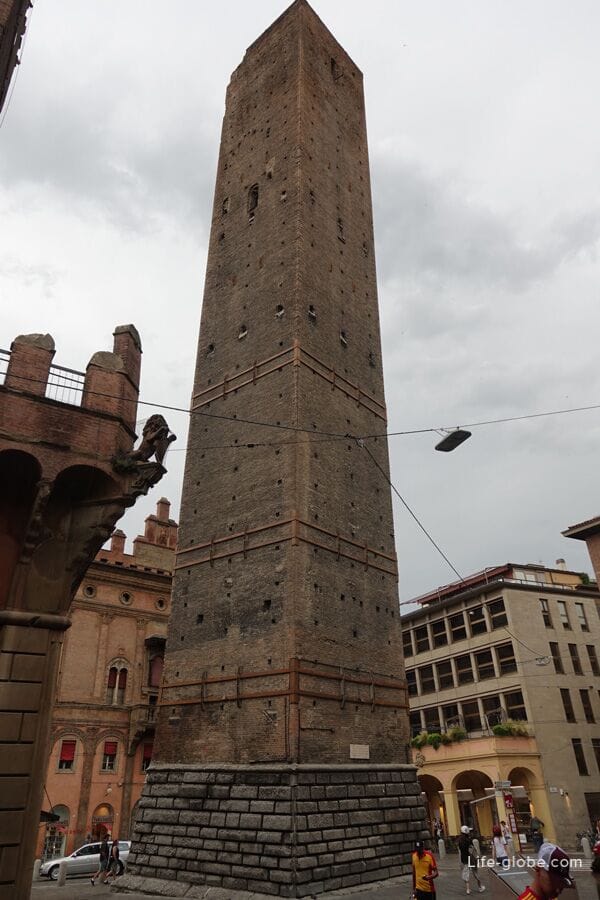
All accommodation facilities in Bologna, from budget to luxury, you can view and book here